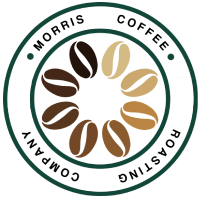قهوه موریس – اولازهمه، در فرآیند عسلی Honey process ، هیچ عسلی درگیر نیست.
این نام در عوض به گوشت چسبناک گیلاس قهوه اشاره دارد که موسلاژ نامیده میشود.
هنگامیکه قهوه پردازش و خشک میشود، میتوانید تمام گیلاس را روشن بگذارید (فرآیند طبیعی نامیده میشود) یا تمام گیلاس را با استفاده از فرآیند شسته شده حذف کنید.
فرآیند عسلی جایی بین این دو قرار دارد و اساساً همان روش طبیعی پالپ شده است.
فرآوری عسلی در آمریکای مرکزی آغاز شده است و معمولاً شنیدن طیف وسیعی از فرآیندهای عسلی: سیاه، قرمز و زرد، با برچسبهای سفید و طلای کمتر معمول نیز وجود دارد.
این برچسبها حاکی از موارد کمی متفاوت در مناطق مختلف رشد قهوه است، اما بهطورکلی، یا به درصد موسیلاژ باقیمانده روی دانه یا مقدار نور و گرما در معرض مخاط اشاره دارد.
گرما و نور توسط عمق لایه قهوه یا فرکانس تبدیل پوست کنترل میشود که بهنوبه خود در سرعت خشک شدن دانهها و میزان تخمیر در این میان تأثیر دارد.
روند عسل سیاه بهطورکلی به معنی موسیلاژ بیشتر و زمان خشک شدن کندتر است که منجر به ایجاد یک فنجان شیرین، سنگینتر و گردتر با اسیدیته نرمتر میشود.
فرآیند عسلی پیدرپی (سیاه، سپس قرمز، سپس زرد، طلایی و سفید) نشاندهنده مخاط کمتر و زمان خشک شدن سریعتر، یا چرخش بیشتر و درنتیجه فنجانهای روشنتر است.
روند عسلی سفید جذاب است زیرا همه گیلاسها با استفاده از جت آب حذف میشوند و این باعث میشود که «بدون میوه» ترین فرآیند باشد، حتی بیشتر از فرآیند شسته شده.
Honey process
First of all, there is no honey involved.
The name refers instead to the sticky flesh of the coffee cherry called mucilage.
When coffee is processed and dried, you can choose to leave all the cherry on (called the natural process) or remove all the cherry using the washed process.
The honey process sits somewhere between the two and is essentially the same as the pulped natural method.
Honey processing has caught on in Central America,
and it is common to hear about a range of honey processes: black, red, and yellow, with less common labels of white and gold also existing.
These labels imply slightly different things in different coffee-growing regions but, in general,
refer either to the percentage of mucilage left on the bean or the amount of light and heat to which the mucilage is exposed.
The heat and light are controlled by either the depth of the coffee layer or the frequency with which the parchment is turned,
which in turn has an impact on how quickly the beans dry and the amount of fermentation that takes place in the interim.
The black honey process universally implies more mucilage and a slower drying time,
which results in a heavy, rounder, sweet cup with softer acidity.
Each successive honey process (black, then red, then yellow, gold, and white)
represents less mucilage and quicker drying times, or more frequent turning, resulting in brighter and lighter-bodied cups.
The white honey process is intriguing as all the cherry is removed using water jets,
which makes it possibly the most “fruit”-free process, even more so than washed processing.


